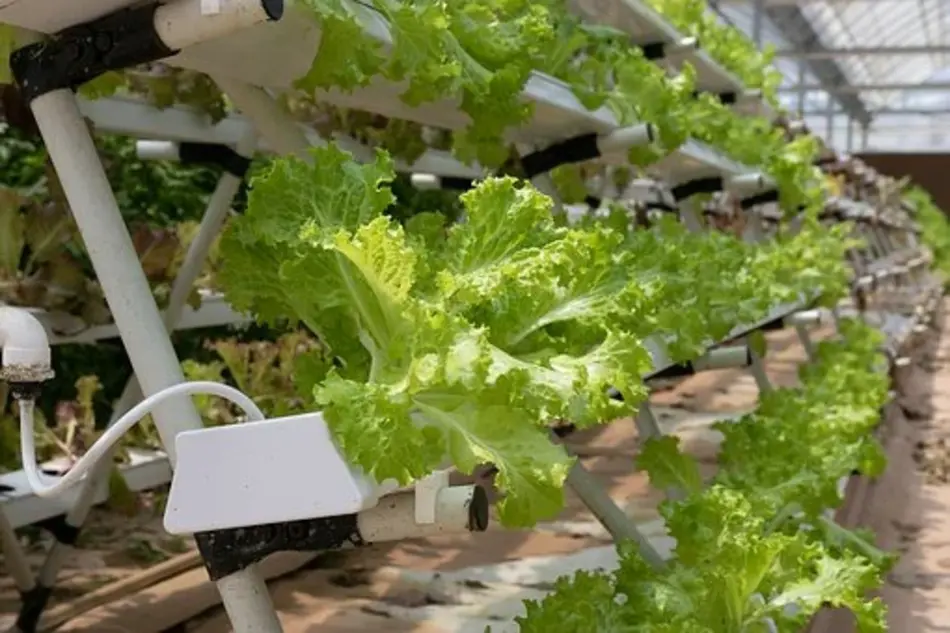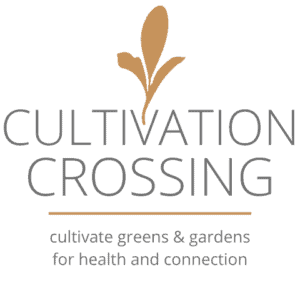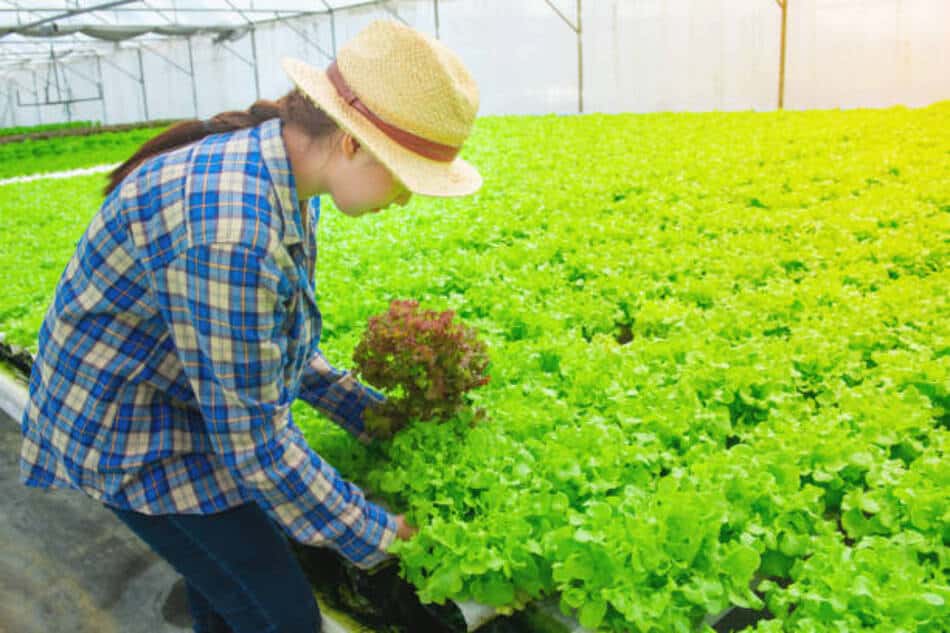In the debate of hydroponics vs soil, there are many factors to consider. Hydroponics has many benefits that make it a more efficient way to grow plants, but there are also some drawbacks. Soil, on the other hand, is a more traditional method of growing plants, but it also has its own set of advantages and disadvantages.
The main difference between hydroponics and soil is the medium that which plants are grown in. Hydroponics uses a nutrient-rich solution, without the use of soil. Soil is a natural medium that contains many essential nutrients for plant growth, such as nitrogen, phosphorus, and potassium. Soil also provides a support structure for plants’ roots and helps to anchor them in place.
What Is Hydroponics?
Hydroponics is a method of growing plants in a nutrient-rich solution, without the use of soil. The word “hydroponics” comes from the Greek words “hydro”, meaning water, and “ponos”, meaning labor. Hydroponics was first developed by ancient Babylonians and Egyptians, who used the technique to grow plants in sterile, sandy soil. The first modern Hydroponic system was developed in the 1930s by Dr William Gericke, a professor at UC Berkeley. He coined the term “hydroponics” and wrote a book about it called “Complete Hydroponics”. Hydroponics has since been used by NASA to grow food in space and is now a popular method of growing plants indoors.

What Is Soil?
Soil is a natural medium that contains many essential nutrients for plant growth, such as nitrogen, phosphorus, and potassium. Soil also provides a support structure for plants’ roots and helps to anchor them in place. In addition to these benefits, soil also serves as a reservoir of water and air for plant roots. Soil is the traditional medium for growing plants and has been used for centuries. There are different plants that thrive in different types of soil, such as sandy soil, clay soil, or loamy soil. The soil acidity and alkalinity differ and are also important for some plants.

What Is The Difference Between Hydroponics Vs Soil?
- Hydroponics can be done indoors, while soil must be done outdoors.
- Hydroponics requires less water than soil.
- Hydroponics can be done with little to no sunlight, while soil requires sunlight to grow.
- Hydroponics can be done with artificial lighting, while soil requires natural sunlight.
- Hydroponics can be controlled more easily than soil.
- Hydroponics allows for a faster growth rate than soil.
- Hydroponics yields larger plants than soil.
The Pros Of Hydroponics Include:
There are many advantages of hydroponics, including:
- Hydroponics can be done indoors, making it a great option for those who do not have access to an outdoor space.
- Hydroponics requires less water than soil, making it a more efficient way to grow plants.
- Hydroponics can be done with little to no sunlight, making it a great option for those who do not have access to sunlight.
- Hydroponics can be done with artificial lighting, making it a great option for those who do not have access to natural sunlight.
- Hydroponics can be controlled more easily than soil, making it a great option for those who want to be able to control the growing environment.
- Hydroponics allows for a faster growth rate than soil, making it a great option for those who want to grow plants quickly.
- Hydroponics yields larger plants than soil, making it a great option for those who want to grow large plants.
The Cons of Hydroponics Include:
There are some disadvantages of hydroponics, including:
- Hydroponics can be expensive to set up.
- Hydroponics requires more effort to maintain than soil.
- Hydroponics can be difficult to troubleshoot if problems arise.
The Pros Of Soil Include:
There are many advantages of soil, including:
- Soil is a natural medium that contains many essential nutrients for plant growth.
- Soil also provides a support structure for plants’ roots and helps to anchor them in place.
- Soil is easy to obtain and use.
- Soil is easy to troubleshoot if problems arise.
The Cons Of Soil Include:
There are some disadvantages of soil, including:
- Soil can be difficult to control.
- Soil can be messy.
- Soil can contain pests and diseases.
- Soil can be difficult to transport.
Plants Suitable For Hydroponics:
Hydroponics is suitable for a wide range of plants, including vegetables, fruits, and herbs. Some of the most popular plants to grow in Hydroponics include tomatoes, cucumbers, peppers, and eggplants.
- Small Systems Plants: Hydroponics systems can be as small as a fish tank and a plant pot. These types of Hydroponics systems are suitable for growing herbs and small vegetables. Leafy lettuce, Basil, Swiss chard, Chives, Radish sprouts, Spinach, Watercress, Arugula, Kale, Pak choi, Wheatgrass
- Medium Systems Plants: Hydroponics systems that are slightly larger, such as IBC Hydroponics systems, are suitable for growing a wider range of vegetables, fruits, and herbs. Some of the most popular plants to grow in medium Hydroponics systems include tomatoes, cucumbers, peppers, and eggplants.
- Large Systems Plants: Hydroponics systems can be as large as a swimming pool and a greenhouse. These types of Hydroponics systems are suitable for growing a wide range of plants, including fruits and vegetables. Tomatoes, Cauliflower, Cucumbers, Beans, Peppers, Peas, Squash, Broccoli, Watermelons, Cabbage, Cantaloupe, okra, Eggplant, and strawberries.
Plants Suitable For Soil:
Soil is suitable for a wide range of plants, including trees, vegetables, fruits, and herbs. Each plant has different soil requirements, so it is important to choose the right type of soil for the plant you want to grow.
Some of the most popular plants to grow in soil include:
- Trees: Soil is necessary for trees because it anchors their roots and provides them with essential nutrients. Trees that are commonly grown in soil include maple trees, oak trees, and pine trees.
- Vegetables: Soil is necessary for vegetables because it provides them with essential nutrients and a support structure for their roots. Vegetables that are commonly grown in soil include tomatoes, cucumbers, peppers, eggplants, potatoes, carrots, and onions.
- Fruits: Soil is necessary for fruits because it provides them with essential nutrients and a support structure for their roots. Fruits that are commonly grown in soil include watermelons, cantaloupes, strawberries, and blueberries.
- Herbs: Soil is necessary for herbs because it provides them with essential nutrients and a support structure for their roots. Herbs that are commonly grown in soil include basil, rosemary, thyme, and oregano.
Types of Soil
There are many different types of soil, including:
- Clay soil: Clay soil is a type of soil that is made up of small particles of clay. Clay soil is dense and heavy, and it retains water well. Clay soil is suitable for growing lavender, sedum, potatoes, tomatoes, carrots, radish and so on.
- Sandy soil: Sandy soil is a type of soil that is made up of small particles of sand. Sandy soil is light and dry, and it drains well. Sandy soil is suitable for growing vegetables, fruits, and herbs.
- Loamy soil: Loamy soil is a type of soil that is made up of a mixture of sand, clay, and organic matter. Loamy soil is fertile and it retains water well. Loamy soil is suitable for growing oilseeds, wheat, sugarcane, jute, cotton, pulses and so on.
Hydroponics Vs Soil: Which One Is Better?
The answer to this question depends on your individual needs and preferences. If you are looking for a more controlled environment, then hydroponics may be the better option for you. If you prefer a natural growing medium, then the soil may be the better option for you. Ultimately, the best growing method is the one that works best for you and your plants.
Conclusion
In conclusion, asking the question Hydroponics Vs Soil: Which One Is Better? there are pros and cons to both hydroponics and soil. It is important to consider your individual needs and preferences when deciding which method is best for you. Hydroponics may be the better option if you are looking for a more controlled environment, while soil may be the better option if you prefer a natural growing medium. Ultimately, the best growing method is the one that works best for you and your plants.

